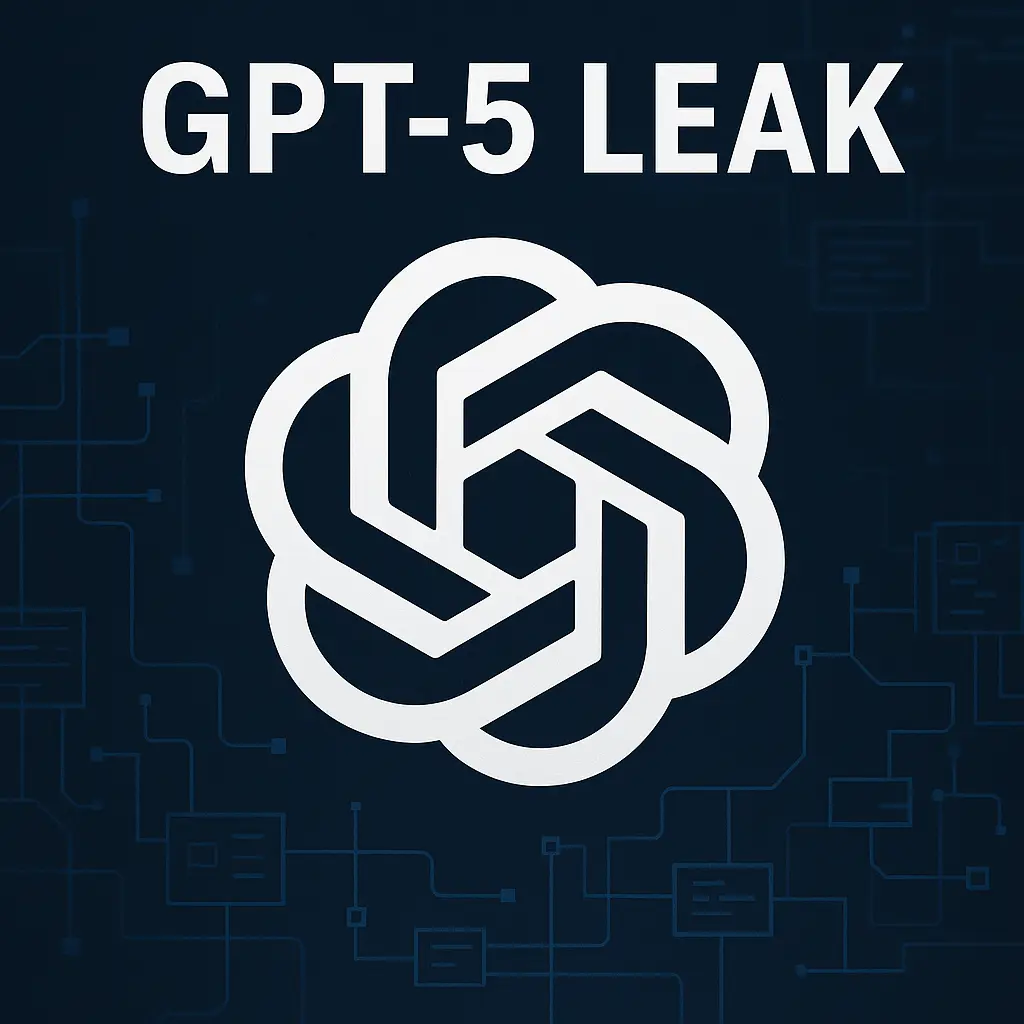The GPT-5 leak has thrown OpenAI’s meticulously crafted launch plans into chaos. Hours before the official announcement, a now-deleted GitHub blog post revealed key details of the most significant upgrade to the ChatGPT engine since its debut.
The leaks are not just gossip—they suggest a fundamental shift in how OpenAI plans to position itself against Meta’s Llama, Google’s Gemini, and Cohere’s enterprise models. And the message is blunt: GPT-5 isn’t just an evolution; it’s an arms race escalation.
GPT-5 leak reveals four versions for different markets
The leaked post confirmed four distinct GPT-5 variants:
- GPT-5 — designed for complex reasoning and multi-step problem solving.
- GPT-5 mini — a lighter model for efficiency without sacrificing too much capability.
- GPT-5 nano — optimized for ultra-low latency and instant responses.
- GPT-5 chat — tuned for multimodal conversations and enterprise integrations.
This segmentation suggests OpenAI wants GPT-5 to be everywhere—on consumer devices, embedded in corporate systems, and powering niche tools—before rivals can lock in market share.
AI agent powers take center stage in GPT-5 leak
The most striking revelation from the GPT-5 leak is its enhanced AI agent capability. Instead of requiring precise prompts, GPT-5 can execute complex workflows with minimal user guidance. This could be the death blow to countless “prompt engineering” startups—if the model can anticipate needs, human-crafted prompt packs become obsolete.
OpenAI is clearly chasing autonomy, making GPT-5 less a chatbot and more an operational partner. That’s a direct challenge to enterprise automation platforms and even some coding assistants like GitHub Copilot X.
Internal competition and the open-source strategy
Reddit users who archived the leaked post noted performance comparisons with Llama 4 Scout and Cohere v2, and in programming, reasoning, and conversational fluency, GPT-5 was consistently ahead. If accurate, this cements OpenAI’s lead at a moment when Google and Meta are pushing aggressive updates of their own.
Unlike previous releases, GPT-5 seems deeply tied to GitHub integrations—hinting at a closed-loop developer ecosystem designed to keep coders inside OpenAI’s orbit. This approach is a contrast to the open-source AI models discussed in our AI in Politics analysis and the broader AI market strategy review.
Timing is not accidental
OpenAI’s official “LIVE5TREAM” event—scheduled for 19:00 in Spain—now reads less like a reveal and more like damage control. Sam Altman has been teasing a “key week” for the company, and the early leak may actually amplify attention.
Still, the narrative has shifted. Instead of a carefully choreographed product pitch, OpenAI now faces a tech community that has already digested the bullet points.
GPT-OSS models and accessibility push
Perhaps the most overlooked part of the leak: the mention of two GPT-OSS open-source models, one PC-compatible. This is a calculated move—giving developers free access could undercut Llama’s community-driven growth while positioning OpenAI as the “friendly” giant, even as it locks premium features behind GPT-5’s commercial tiers.
Conclusion: GPT-5 leak changes the AI battlefield
The GPT-5 leak shows a company doubling down on both ends of the spectrum—hyper-powerful enterprise AI and accessible open-source tools. It’s a bold, oppositional strategy to rivals’ siloed offerings.
The question is whether OpenAI can maintain that control when leaks like this show just how fragile the secrecy game has become. If GPT-5 delivers as promised, it won’t just make ChatGPT “smarter”—it may redefine the AI battlefield for years.
Related articles:
External references:
156 views